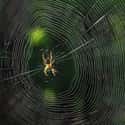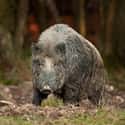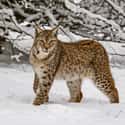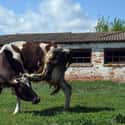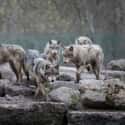-
(#6) Spiders Weave Radioactive Webs All Over The Red Forest
Radioactive particles have covered the Red Forest of Chernobyl for more than three decades, and new webs of radioactive material are being built all the time. As radioactive spiders build their webs to catch their prey, they add to the dangerous environment of the forest.
These webs are not like normal spider webs - in fact, they are woven in abstract ways that suggest genetic mutation is at hand. They're also highly radioactive themselves, making them a danger for any non-radioactive animal to touch.
-
(#4) Radioactive Boars Stalk The Streets And Wind Up On People's Plates As Food
In the exclusion zone of Chernobyl and along the borders of outlining towns, radioactive boars intermingle with regular boars being used for food. Occasionally, these radioactive boars interact with humans as foe or food, both of which pose serious threats.
In 2017, it was confirmed that approximately one out of three boars slain in nearby Germany exhibited levels of radiation deemed completely unsafe for human consumption. This level of toxicity is spread as the boars continue to consume radioactive mushrooms in the fields.
-
(#2) A Lynx Once Thought To Be Non-Existent In The Area Thrives In Chernobyl
The Eurasian lynx is a cat once thought to have disappeared from Europe. But in 2014, scientists determined they made a comeback - to Chernobyl. Like a lot of other creatures in the radioactive zone, this species of lynx thrived because there were no humans. Urbanization and hunters wiped out the species in the early 20th century in Western Europe, but they remained in parts of Siberia.
Now, several hundred of these little creatures call Chernobyl home. Because they're very elusive - and the zone itself is very dangerous - scientists haven't been able to determine how radioactive these creatures are. Researchers predict they have radiation levels similar to other animals in the zone.
-
(#3) Swallows Living In The Red Zone Have Deformed Beaks
In the aftermath of the Chernobyl incident, it wasn't just the land animals who felt the effects of radiation. Birds have proven to be particularly affected by nuclear fallout. This is particularly true for the barn swallows around Chernobyl. In the early 2000s, the barn swallow population was observed to have several horrific mutations, including deformed beaks, disproportionate feathers, partial albinism, and significantly smaller brains.
-
(#7) Radioactive Cows Are Producing Toxic Milk
The area around Chernobyl was a bustling agricultural center before the meltdown. When people left, they took their farm animals too. But new generations born from these radioactive animals showed extreme genetic mutations and deformities. In 1989, farmers reported birth defects in their animals; one cow even had a mutated cleft lip.
As the years wore on, cows continued to graze on contaminated feed and internally develop less physically apparent complications. Despite looking relatively normal, cows near the zone produce toxic milk not fit for consumption.
-
(#1) In The Radioactive Red Forest, Fierce Gray Wolves Reign
Following the disastrous fallout of the Chernobyl meltdown, trees temporarily took on a rather peculiar shade of crimson, and the region within the close proximity of the reactor received the moniker “Red Forest.” In the Red Forest, radioactive wolves are apex predators, with some studies suggesting their population is approximately seven times higher than that of comparable sites.
The animals have roamed far and wide, a problem as their carcasses are toxic to touch.
New Random Displays Display All By Ranking
About This Tool
Chernobyl has become synonymous with disaster. The nuclear disaster in 1986 caused thousands of people to suffer from cancer, and the once densely populated area became a ghost town. But the Chernobyl quarantine zone is not without life. Wild animals such as wolves, wild boars, and bears have returned to the surrounding dense forests, and most of the radioactive animals have survived. In contrast, the vitality of nature is shocking.
After the nuclear power plant exploded, a large number of creatures died, but radioactive animals appeared and seem to have strong self-healing abilities, their genes had changed, and their body shape and fur color might also change. The random tool displays 9 fascinating radioactive animals in Chernobyl.
Our data comes from Ranker, If you want to participate in the ranking of items displayed on this page, please click here.










